Overview
This article highlights engaging activities that can significantly enhance the development of autistic toddlers. It focuses on creative and sensory activities, such as sensory bottles and edible jewelry, which not only foster engagement and creativity but also support essential developmental skills. These skills include fine motor coordination, social interaction, and cognitive growth. Research and case studies cited throughout the content underscore the importance of these activities in nurturing development.
As parents, we understand the unique challenges you face. Finding ways to connect with your child while promoting their growth can sometimes feel overwhelming. However, incorporating simple yet effective activities into your routine can make a world of difference. For instance, sensory bottles can captivate a toddler’s attention, while edible jewelry offers a fun way to explore textures and tastes.
We encourage you to try these activities and observe how your child responds. Each small step can lead to significant progress in their development. Remember, you’re not alone on this journey. Sharing your experiences with others can provide support and encouragement. We invite you to join the conversation—what activities have you found beneficial? Let’s learn from each other and continue to foster our children’s growth together.
Introduction
In a world where every moment counts in a child's development, parents and caregivers are constantly seeking innovative ways to support their little ones, especially those on the autism spectrum. Imagine the joy of seeing your child engaged with sensory bottles that captivate their attention or homemade musical instruments that unleash their creativity. These engaging activities can foster essential skills in toddlers.
This article delves into a variety of hands-on activities designed to enhance fine motor skills, promote social interaction, and encourage cognitive growth. By exploring these creative approaches, parents can create enriching environments that not only entertain but also empower their children to thrive.
Whether through crafting, play, or sensory exploration, these strategies provide invaluable opportunities for learning and connection. Together, we can pave the way for a brighter future.
About ASD Media: Empowering Parents with Resources for Autism Support
At ASD Media, we are dedicated to enhancing the implementation of ABA therapy, offering valuable insights and strategies that address challenges and improve outcomes. We provide a comprehensive range of resources tailored for parents and professionals, fostering a supportive and inclusive community where experiences can be shared, and learning is encouraged. By subscribing to our newsletter, you gain access to the latest news and unlimited digital resources, empowering you to unlock the potential of youth with autism and ADHD. This includes effective strategies for managing challenging behaviors, navigating support services, and enhancing social skills development.
Research shows that even young individuals facing significant challenges can achieve clinically meaningful adaptive behavior improvements after 24 months of ABA therapy. This underscores the importance of tailored approaches. Customizing therapy to meet the distinct requirements of each individual is essential for optimizing developmental advancement. Our mission at ASD Media is to ensure that all individuals with autism receive the necessary support to thrive, as highlighted in case studies emphasizing the critical role of effective therapies and comprehensive support systems. For example, the case study 'The Future of Autism Therapy' illustrates how ongoing research and policy developments are vital to enhance community support for parents. Additionally, as the apricoott team observes, 'ABA therapy can be a fulfilling profession for individuals who enjoy engaging with youngsters and making a positive impact on their lives.'
ASD Media remains at the forefront of these trends, providing essential resources and expert opinions that reflect the latest advancements in ABA therapy. To fully benefit from these resources, we encourage parents to subscribe to our newsletter and engage with our community. Together, we can make a difference in the lives of those we support.
Sensory Bottles: Create Calming Visual Experiences for Toddlers
Sensory bottles are not only simple to create but also serve as wonderful tools for enhancing focus and relaxation in toddlers. By filling a clear plastic bottle with materials like glitter, beads, or colored water, you can provide a soothing visual experience that captivates your little one's attention. To craft a sensory bottle, just fill the bottle with water, add your chosen sensory materials, and seal it tightly. Encourage your child to shake the bottle and observe the mesmerizing swirl of contents, promoting visual tracking and offering calming effects.
Research indicates that children who engage in regular sensory play, such as using sensory bottles, show improved focus and require less support in social situations and self-care activities compared to those who do not participate in such therapeutic activities. This aligns with findings that highlight the positive impact of sensory integration therapy on youth development. For instance, a case study demonstrated how sensory bottles tailored to a child's interests can effectively reduce boredom and increase engagement, making them ideal for long trips or peaceful moments at home.
The advantages of sensory bottles as activities for autistic toddlers are backed by existing research and case studies, as they not only provide calming effects but also support developmental milestones. By incorporating sensory play into daily routines, parents can foster an environment that encourages exploration and creativity, ultimately aiding in their child's development and well-being. As L.R. Knost wisely stated, "Parenting has nothing to do with perfection. Flawlessness isn’t even the objective, not for us, not for the next generation." This perspective is vital for parents navigating the unique journey of raising a child with special needs.
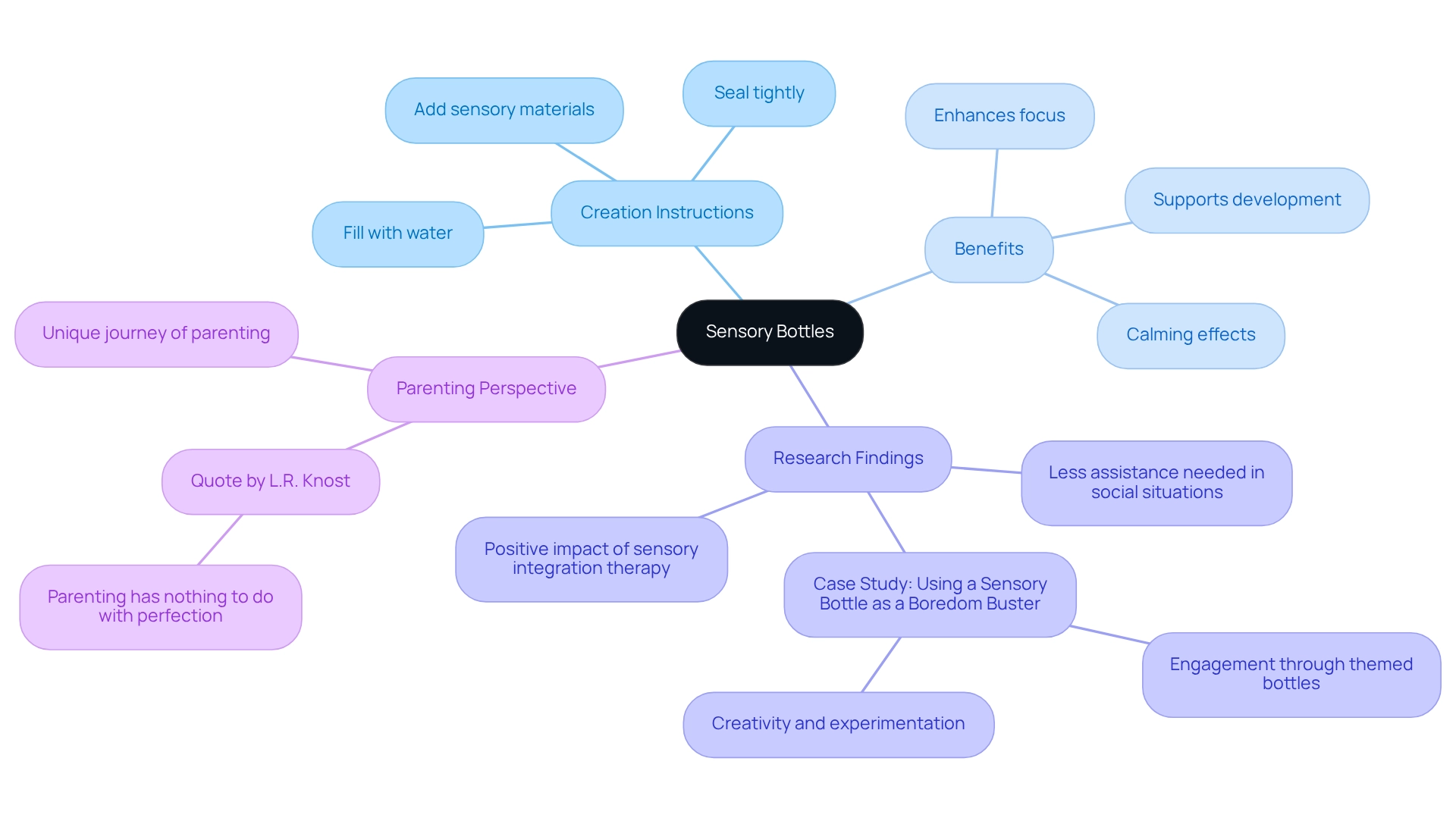
Edible Jewelry: Combine Crafting with Tasty Treats for Engagement
Creating edible jewelry is a delightful and engaging activity that combines crafting with a tasty treat. By using items like cereal, fruit, or pasta, children can make necklaces or bracelets while honing their fine motor skills. Threading these items onto string or yarn not only boosts hand-eye coordination but also nurtures their confidence and proficiency in motor abilities. This hands-on experience sparks creativity, allowing little ones to craft unique pieces while enjoying a snack.
Research shows that crafting significantly boosts toddler engagement. Studies reveal that repeated opportunities for exploration through such activities lead to enhanced control and confidence. For instance, a case study from Filton Avenue Nursery School illustrated how children developed fine motor skills through creative exploration with ice balloons, showcasing the power of engaging, hands-on activities.
Moreover, edible crafts like jewelry-making are particularly beneficial for developing precise hand movements. As children interact with various materials, they not only enjoy the process but also gain essential skills that lay the groundwork for future academic success. This blend of fun and education makes edible jewelry crafting a valuable addition to any activities for autistic toddlers. Consider trying this with your child—it’s a sweet way to learn and grow together!
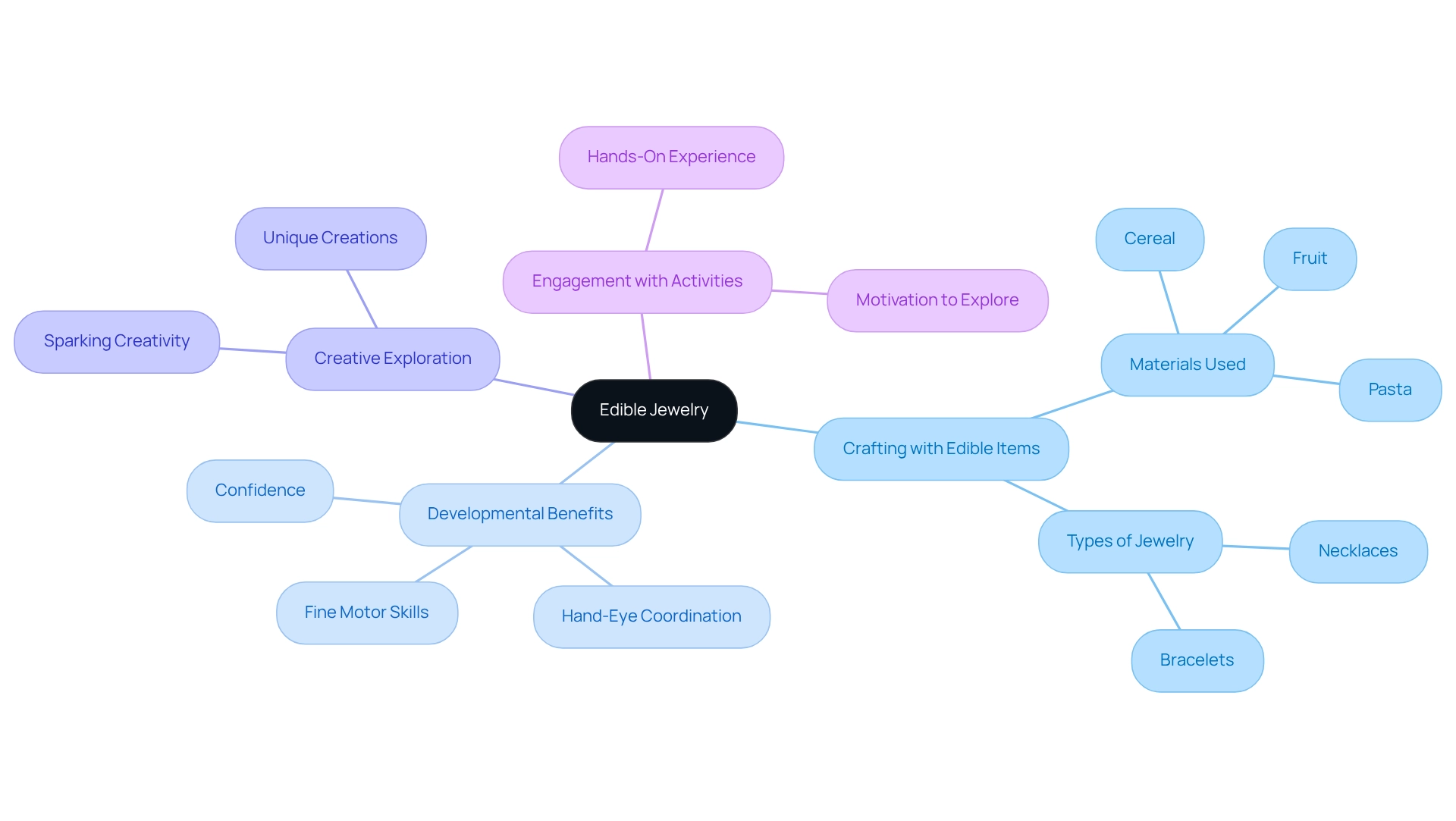
Hide and Seek: Foster Social Skills and Physical Activity
Engaging in hide and seek is a joyful pursuit that serves as one of the effective activities for autistic toddlers to enhance their social skills. This captivating game fosters essential abilities such as turn-taking and communication, as children learn to interact with one another in a playful environment. Moreover, it encourages physical movement, motivating kids to run and hide, which is crucial for their overall well-being and development.
To play, designate one child as 'it' who counts while the others find hiding spots. This simple yet adaptable game can be enjoyed both indoors and outdoors, making it suitable for various environments and weather conditions. Research indicates that games like hide and seek, which are great activities for autistic toddlers, not only increase physical activity levels but also support the development of social skills, making them an excellent choice for parents and caregivers eager to nurture their children's growth. Additionally, child psychologists emphasize the importance of activities for autistic toddlers in promoting social interaction. Engaging in such games can significantly impact young children's ability to navigate social situations, laying the groundwork for future interactions. As children partake in hide and seek, they develop vital skills that will benefit them throughout their lives.
Supporting activities can profoundly influence the lives of children and families by creating opportunities for connection and learning. A case study titled 'Cognitive Development and Physical Engagement' underscores the importance of appropriate environments that cater to the developmental needs of youth, reinforcing the idea that preferences for physical engagement vary with age. As children engage in hide and seek, they not only enjoy themselves but also benefit from an activity that aligns with their cognitive and physical growth.
In the words of psychologist Ursula K. Le Guin, 'The imagination is an essential tool of the mind, a fundamental way of thinking, an indispensable means of becoming and remaining human.' This quote highlights the crucial role of imaginative play in a child's development, further emphasizing the importance of games like hide and seek.

Ice Painting: Explore Colors and Textures in a Unique Way
Ice painting is one of the delightful activities for autistic toddlers to explore colors and textures in a fun, engaging way. Imagine the joy on your child's face as they create their own masterpiece! To get started, simply freeze water mixed with food coloring in ice cube trays. Once frozen, provide your little ones with paper and encourage them to use the colored ice cubes to paint. As the ice melts, they will marvel at how the colors blend and change, fostering their creativity and sensory exploration.
Engaging in activities for autistic toddlers not only entertains them but also nurtures their artistic expression—what a wonderful way to bond and learn together! We invite you to try this activity and share your experiences with us. Your stories could inspire other parents on their creative journeys!
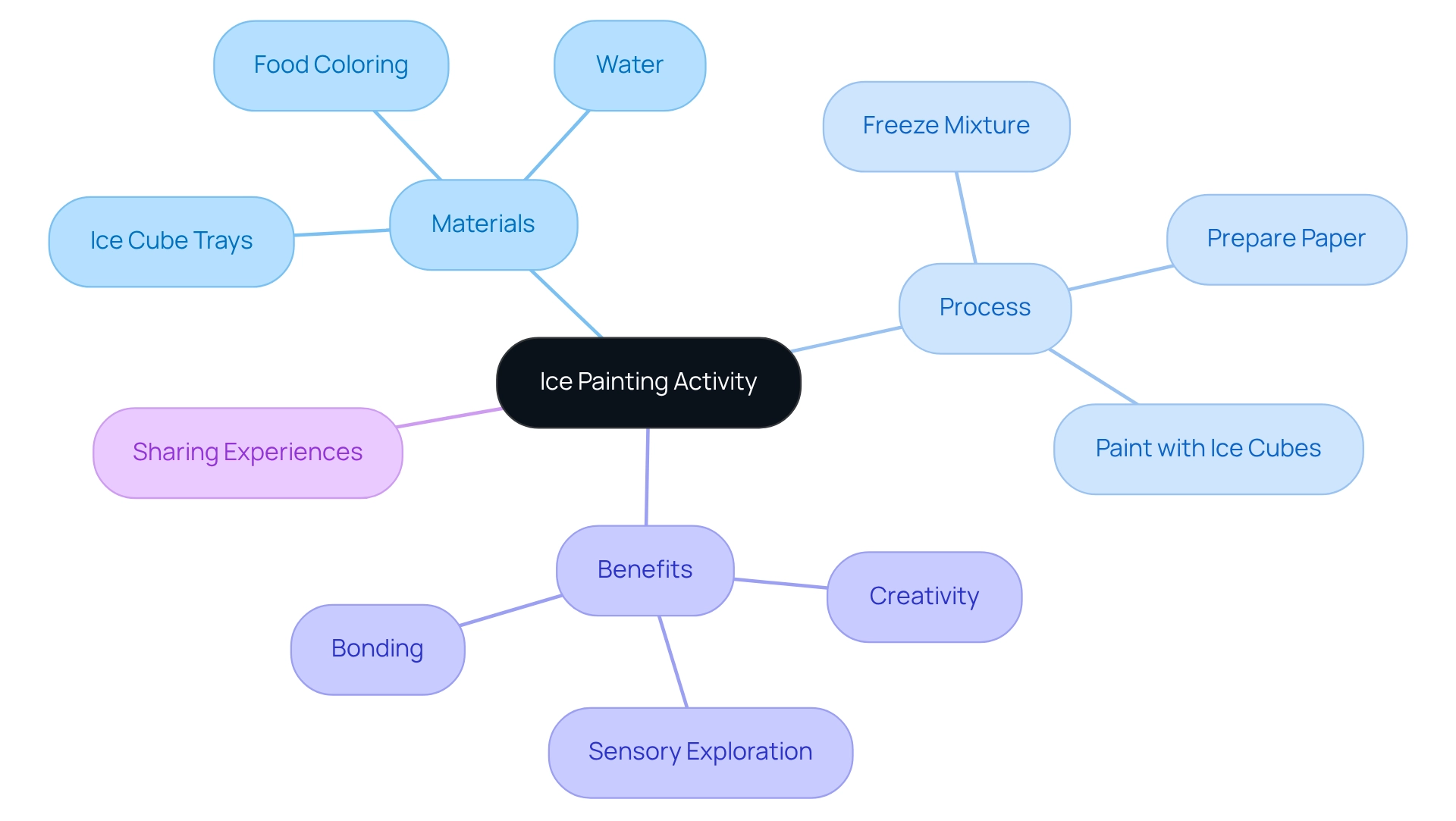
Matching Games: Develop Cognitive Skills Through Play
Matching games offer wonderful flexibility for toddlers and are excellent activities for autistic toddlers that serve as a fantastic resource for enhancing their cognitive abilities. Imagine creating an engaging environment with cards featuring familiar pictures or objects. By laying the cards face down and taking turns flipping them over to find pairs, caregivers can turn this simple activity into an enriching experience. Not only does this straightforward game boost memory and attention, but it also enhances visual recognition abilities. Plus, it provides a delightful bonding experience between caregivers and their little ones.
As Mark Carson notes, toys are essential tools for fostering a love of learning, and matching games fit perfectly into this framework. Research shows that such interactive activities for autistic toddlers can significantly contribute to cognitive skill development, making them a valuable addition to any learning routine. Furthermore, the case study titled 'Observing Children at Play' reveals that these activities offer a glimpse into children's thoughts and feelings, helping caregivers understand their developmental needs more effectively.
Ms. Manpreet Virk, the head of E-learning at SkoolofCode, emphasizes that engaging in play is crucial for young minds, supporting their emotional and social growth. By incorporating activities for autistic toddlers, such as matching games into daily routines, caregivers not only aid cognitive development but also strengthen the bond with their children. So, why not start today? Share your experiences with these games in the comments, and let's support each other in nurturing our little learners.
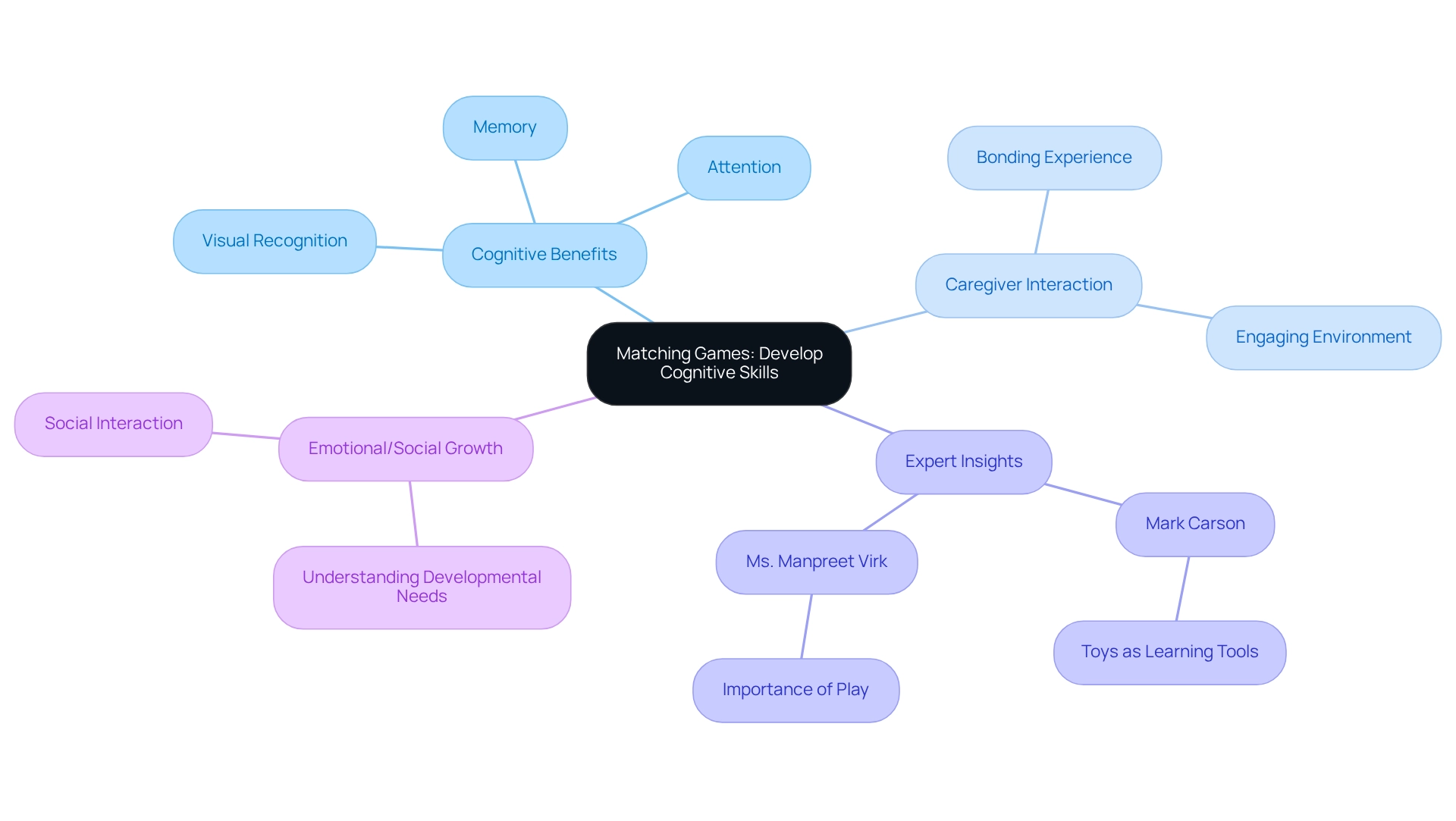
Tactile Collage: Encourage Creativity with Textured Materials
Engaging in activities for autistic toddlers, such as creating a tactile collage, offers a delightful opportunity to interact with various textures, fostering both creativity and developmental skills. By gathering an array of materials such as fabric scraps, sandpaper, and cotton balls, and providing a sturdy base like cardboard or thick paper, you can set the stage for exploration. As your little one adheres these materials onto the base, they not only unleash their creative spirit but also enhance their dexterity through the manipulation of different textures.
Research underscores the value of tactile activities in boosting fine motor skills. Studies reveal that children who partake in sensory exploration can enjoy significant developmental benefits, including an impressive 30% improvement in fine motor skills over time. Engaging in activities for autistic toddlers that involve texture exploration is essential during early childhood, as it nurtures creativity and cognitive growth, laying a solid foundation for future learning.
As Maria Montessori wisely noted, "The young one does not work in order to move or in order to become intelligent. He works to adapt to his environment." This insight highlights the crucial role tactile experiences play in a child's development. Furthermore, a community-oriented training study found that children involved in similar tactile experiences, including activities for autistic toddlers, demonstrated remarkable improvements in their motor abilities, reinforcing the importance of texture exploration for all children.
So, why not embark on this creative journey with your child? Gather those materials and watch as they explore, learn, and grow through the power of touch!
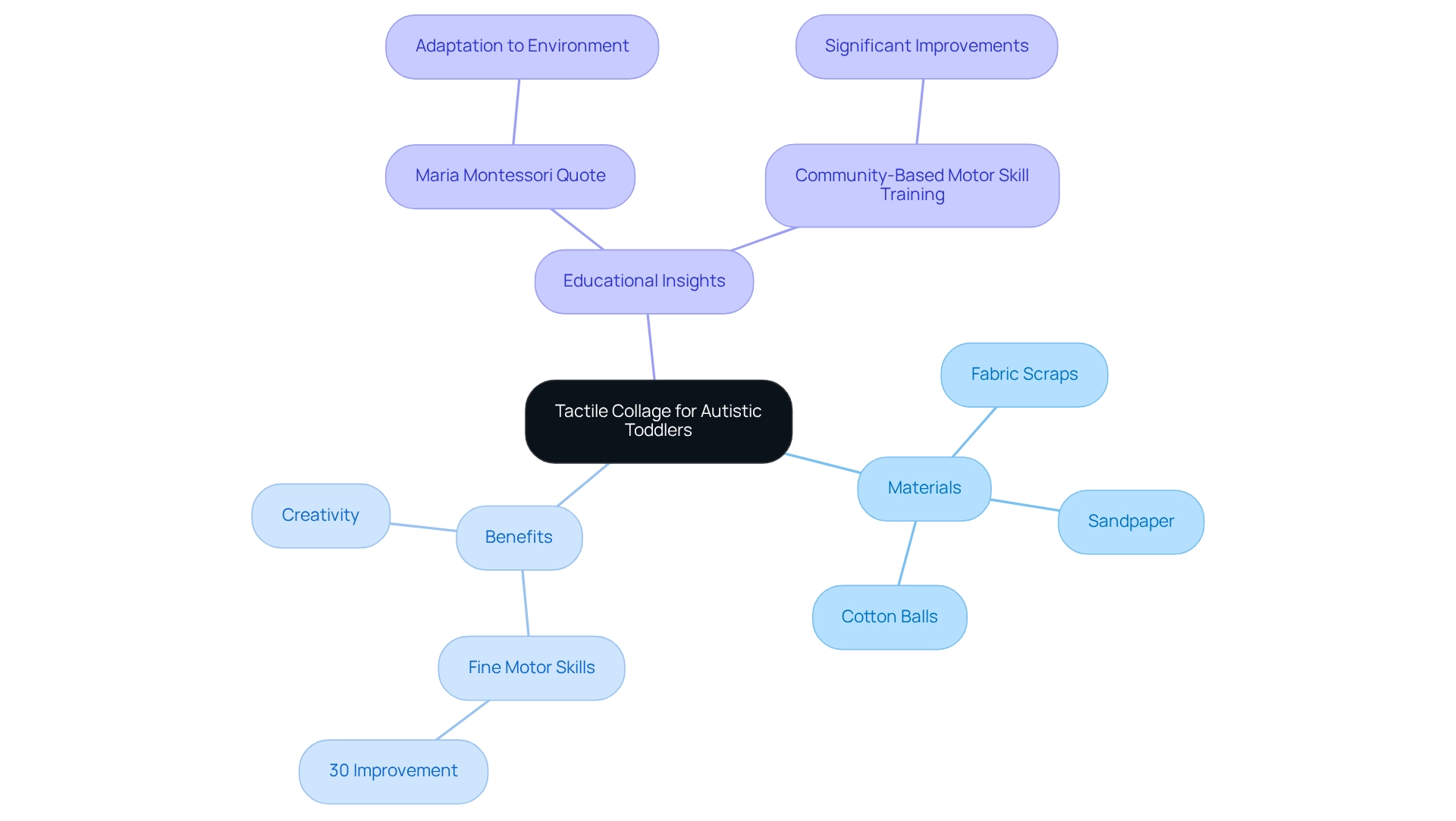
Obstacle Courses: Enhance Physical Skills and Coordination
Designing an obstacle course is a delightful way to inspire toddlers to engage in physical exercise through activities for autistic toddlers while enhancing their physical skills. Imagine incorporating items like cushions, hula hoops, and tunnels to create a course that encourages crawling, jumping, and balancing. This organized movement not only boosts physical fitness but also plays a significant role in developing coordination and spatial awareness as young learners navigate various challenges.
Recent research highlights that such activities are crucial for improving motor skills in children, particularly in fostering coordination growth. Physical therapists emphasize that participating in activities for autistic toddlers can lead to improved overall fitness, which is especially beneficial for autistic youth. As Donna Paul wisely notes, "Everyone achieves more when they work together," reminding us of the collaborative spirit these activities foster.
Establishing an obstacle course can be tailored to meet individual needs, ensuring that each child can participate in activities for autistic toddlers and benefit from the experience. For instance, you might adjust the height of obstacles or the spacing of items based on each child's abilities. As children navigate the course, they not only enhance their physical skills but also build confidence in their movement abilities, laying a strong foundation for future physical activities.
Moreover, studies indicate that structured tasks like these are essential for comprehensive evaluations of children's fitness, as highlighted in the case study 'Limitations and Future Directions in Motor Fitness Research.
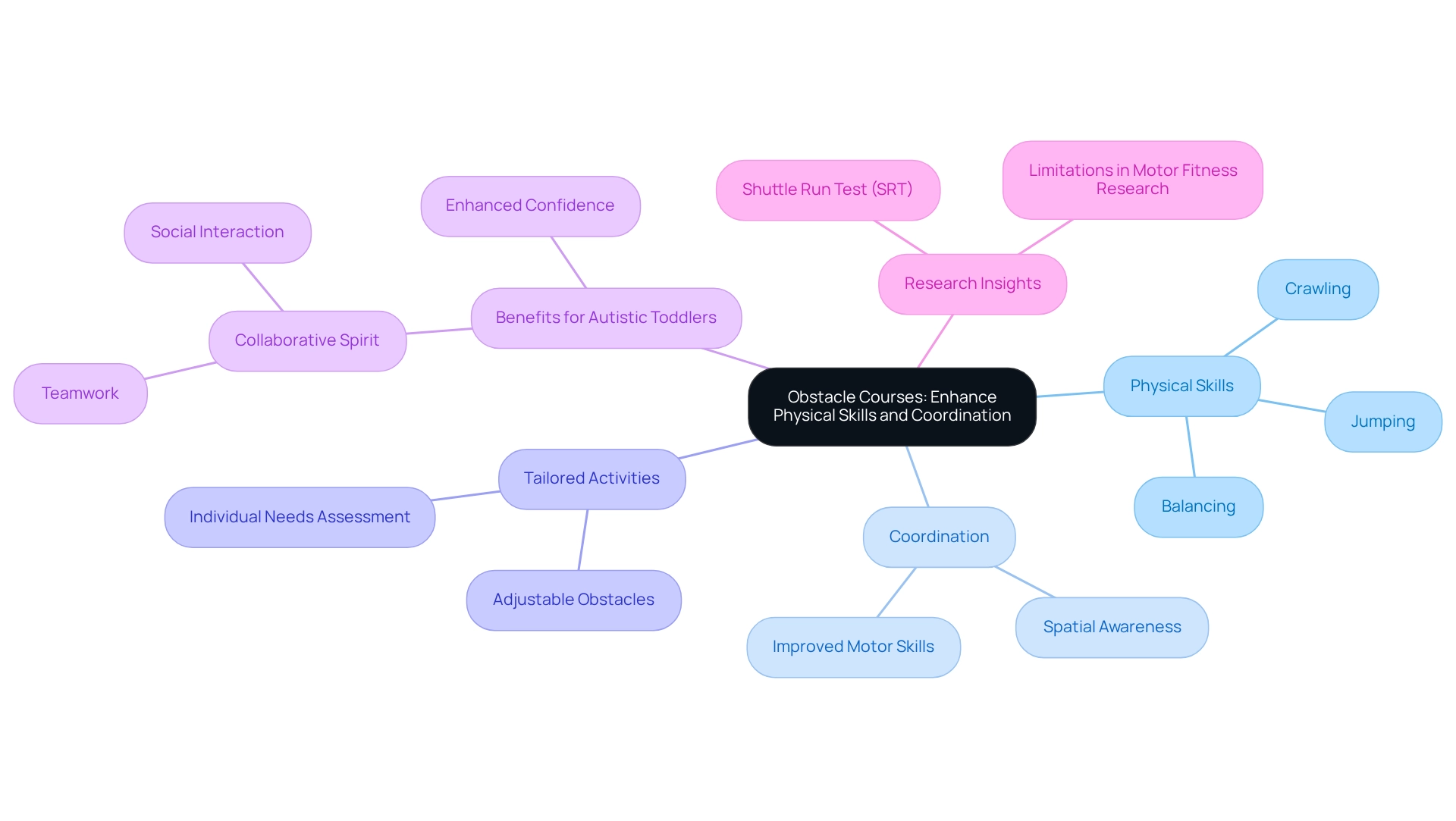
Homemade Musical Instruments: Create Sound and Rhythm Together
Creating homemade musical instruments can be a joyful and engaging experience, particularly as activities for autistic toddlers. Imagine transforming simple materials like empty containers, rice, and rubber bands into shakers and drums. This hands-on activities for autistic toddlers allows children to explore a variety of sounds and rhythms, enhancing their auditory skills while fostering creativity and self-expression through music. Research shows that music activities significantly contribute to early childhood development. In fact, studies indicate that engaging with music can alleviate mental troubles, a sentiment echoed by William Shakespeare over 400 years ago.
Moreover, as Vince Gowmon, a passionate advocate for youth, wisely asserts, "If you trust in recreation, you will not have to regulate your young one's growth as much." This highlights the importance of integrating music into play, encouraging young ones to trust their instincts and grow naturally, thus minimizing the need for excessive control over their development. By crafting and using homemade instruments, toddlers can experience the profound advantages of music, paving the way for enhanced social interactions and emotional well-being.
To further engage your little one, consider involving them in the creation process. Allow them to select materials and embellish their creations, which can strengthen their connection to the task. This not only makes the experience more personal but also nurtures their sense of ownership and pride in their musical journey.
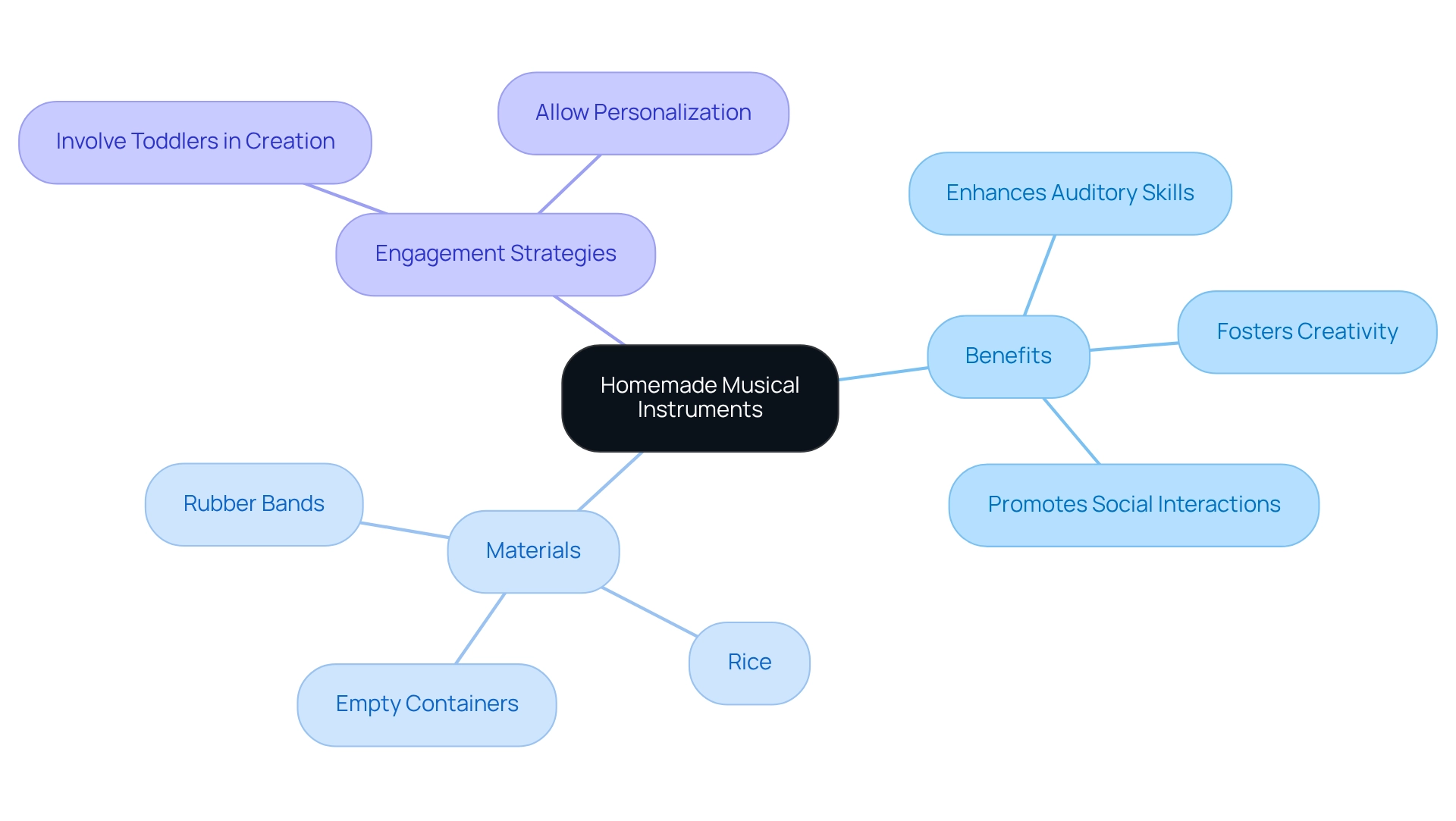
Sensory Tables: Provide Hands-On Exploration for Relaxation
Creating a sensory table filled with materials like sand, water, or rice can serve as activities for autistic toddlers, providing them with a calming and interactive experience. Imagine your little one exploring different textures, pouring, scooping, and sorting—each action honing vital skills. Research shows that activities for autistic toddlers involving sensory experiences are not just fun; they significantly aid in relaxation and sensory processing. Studies reveal that children engaged in sensory tasks often demonstrate improved emotional regulation and cognitive growth.
For instance, a case study titled 'The Necessity of Recreation for Healthy Development' highlights that recreation is essential for youth growth, equipping them with crucial skills to face life's challenges. Experts stress that activities for autistic toddlers play a vital role in healthy development, helping young individuals navigate their surroundings with confidence. This underscores the collaborative nature of sensory activities, inviting children to learn together. By encouraging sensory play, including activities for autistic toddlers in early childhood settings, we can foster not only emotional but also social growth, reinforcing the idea that play is a fundamental component of learning.
What sensory activities have you tried with your little ones? Share your stories and insights with us—together, we can support each other in nurturing our children's development.
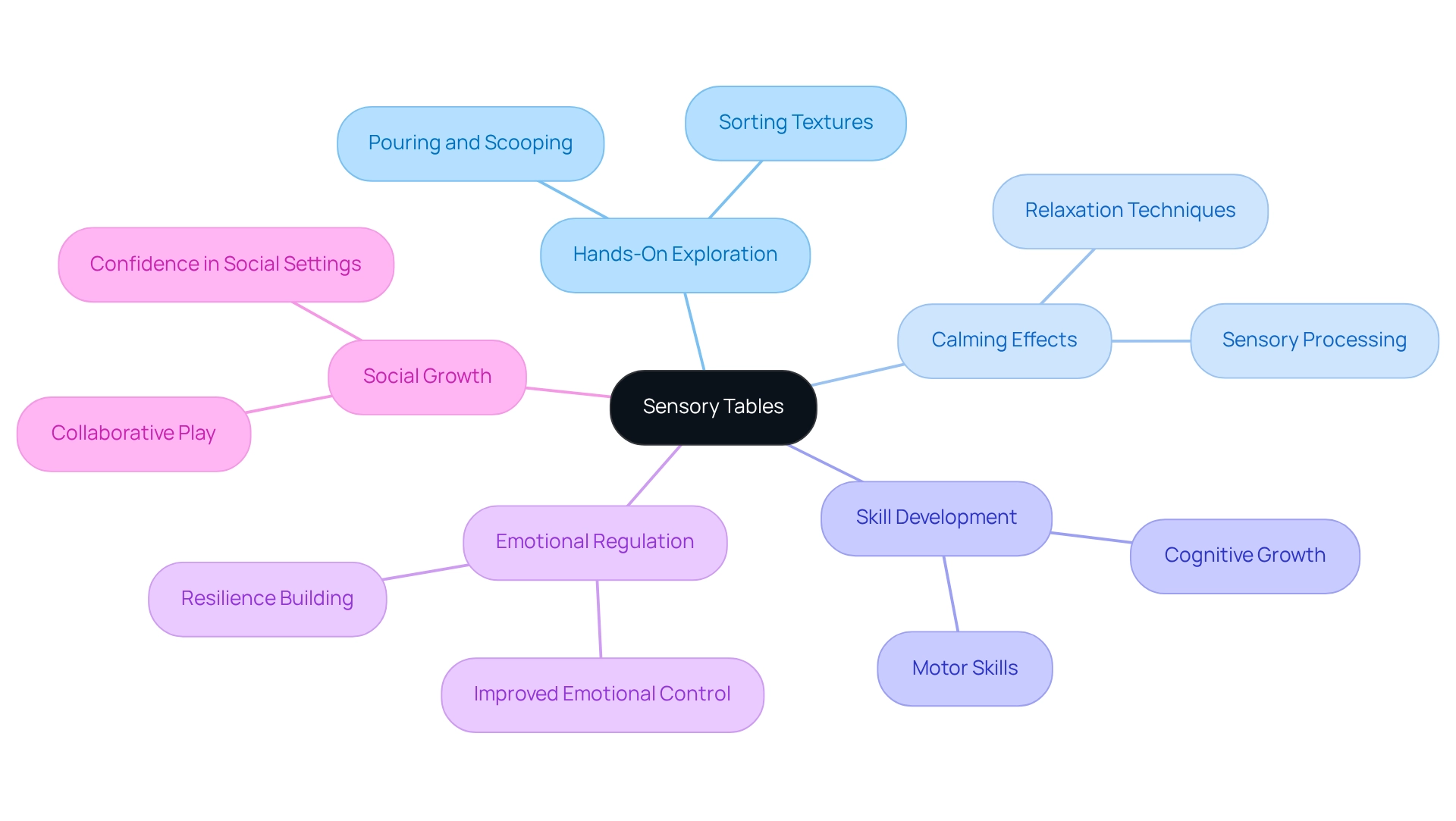
Simon Says: Promote Listening Skills and Physical Activity
Playing Simon Says is a delightful way to nurture listening skills while promoting physical activity. In this beloved game, one player assumes the role of 'Simon,' giving commands that must be followed only if they begin with 'Simon says.' This playful structure not only makes the game enjoyable but also enhances children's attention and their ability to follow instructions. Friedrich Froebel beautifully expressed, 'Recreation is the highest expression of human development in childhood, for it alone is the free manifestation of what resides in a child's soul.' This highlights the vital role of recreation in growth.
Research indicates that games like Simon Says significantly boost listening capabilities. For instance, a study conducted at MTSS Al-Washliyah Serbelawan during the academic year 2021/2022 revealed an average improvement of 52.58 points in listening proficiency among eighth-grade students after participating in similar activities. Such findings underscore the importance of active listening in early childhood development. Educators emphasize that games serve as a bridge between teaching methods and parental engagement, creating a supportive environment for learning.
Insights from the case study 'Listening to Children in Play-Based Education' stress the necessity of attentive listening in play-based settings, reinforcing the developmental benefits of games like Simon Says. By fostering auditory skills through interactive play, Simon Says becomes an essential tool in the developmental toolkit for activities for autistic toddlers, particularly for those on the autism spectrum. It’s a wonderful opportunity for parents to engage with their children in a meaningful way, enhancing both their listening skills and emotional connection.
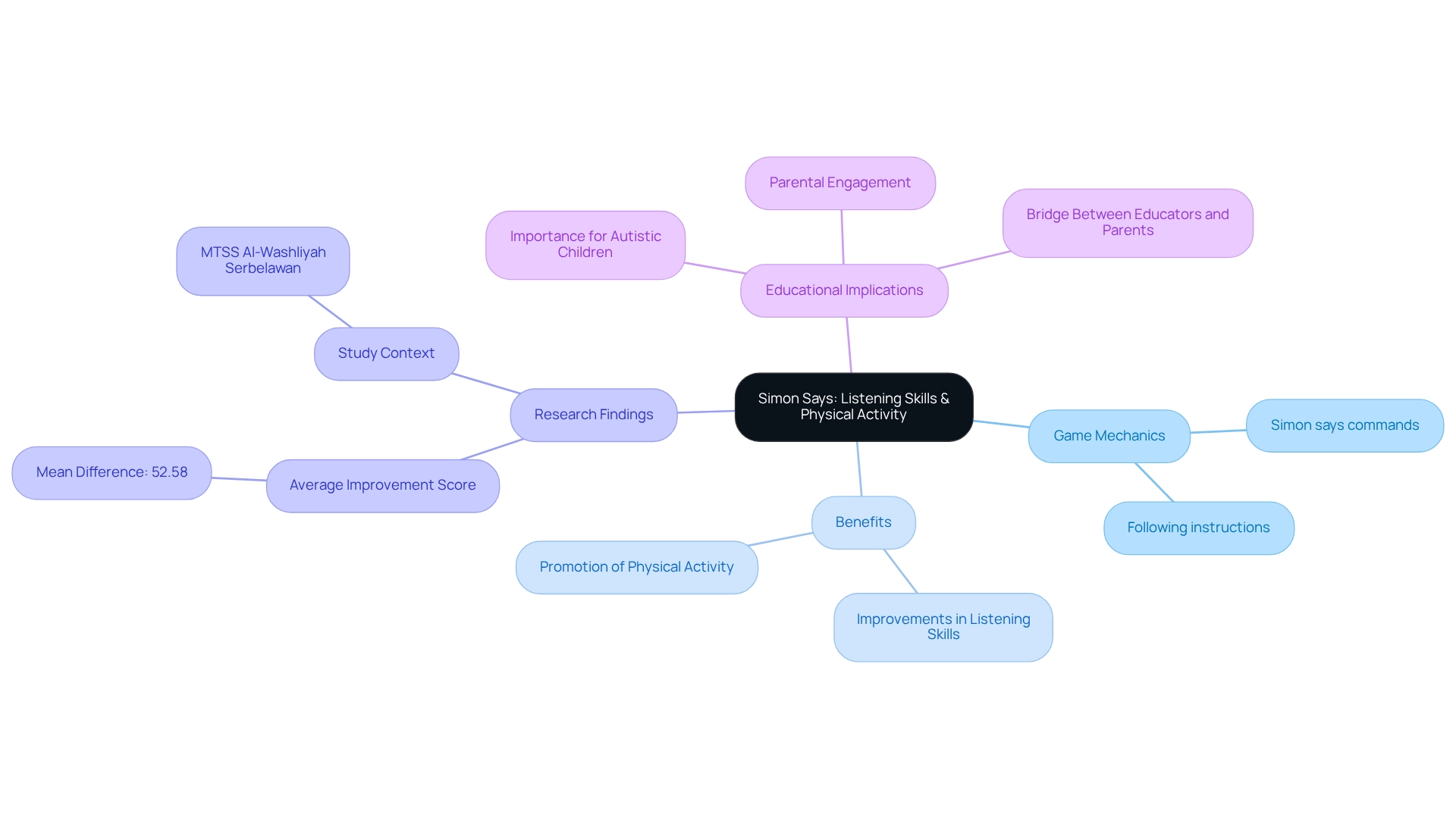
Shredded Paper Crafts: Explore Textures and Creativity
Engaging toddlers in shredded paper crafts is a wonderful example of activities for autistic toddlers that support their development. Imagine your little one surrounded by colorful shredded paper and glue, creating vibrant collages or imaginative sculptures. This hands-on experience not only invites them to explore different textures and colors but also significantly enhances their fine motor skills, making it one of the effective activities for autistic toddlers as they manipulate the paper.
Research shows that these tactile experiences are vital for young learners, nurturing their creativity and innovation. Experts emphasize that play, including activities for autistic toddlers, is essential for cultivating important life skills. As Celeste Roseberry-McKibbin beautifully puts it, "Together we’ve got this!" This sentiment captures the essence of learning through interaction and collaboration.
Furthermore, Dr. Peter Gray highlights the paradox of play, underscoring its role in developing crucial life skills. Engaging in playful activities, as noted by scholars like Abraham Maslow and Carl Jung, fosters innovation and understanding, making play a fundamental aspect of education and creative exploration.
By incorporating texture exploration into activities for autistic toddlers, young children find deep satisfaction and insight, reinforcing the importance of allowing them to express their creativity through crafts. This approach not only aligns with broader developmental goals, including therapeutic outcomes and IEP objectives, but also makes shredded paper crafts a meaningful addition to their developmental journey.
So, why not gather some shredded paper and let your child's imagination soar?

Coin Rubbing: Discover Patterns and Textures Through Play
Coin rubbing is a delightful activity that invites toddlers to explore patterns and textures in a hands-on way. Imagine placing a coin under a sheet of paper and watching as your child rubs a crayon over it, revealing the intricate design of the coin. This simple yet engaging endeavor not only boosts fine motor skills but also introduces your little one to the fascinating concepts of texture and pattern recognition.
As you engage in this activity together, you’ll find that it’s more than just play; it’s a wonderful opportunity for bonding and learning. Children thrive on exploration, and this activity allows them to discover the world around them in a fun and interactive manner. Plus, it’s a chance for you to encourage their curiosity and creativity.
Why not try this at home? Gather a few coins and some crayons, and create a cozy space for your child to experiment. You might be surprised at how much joy this simple activity can bring to both of you. Share your experiences in the comments—what designs did your child create? Let’s celebrate these little moments of discovery together!
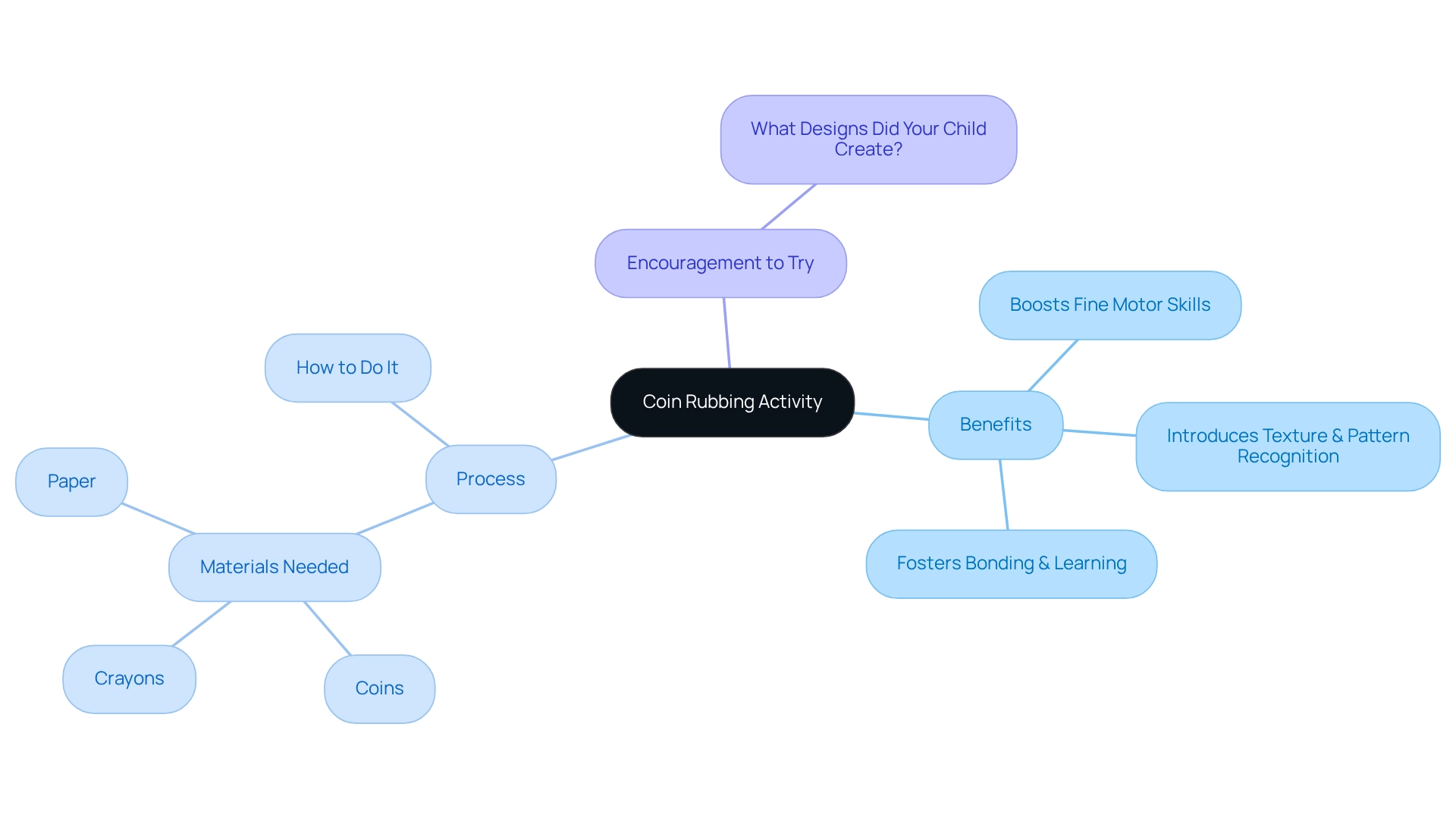
Conclusion
Engaging toddlers, especially those on the autism spectrum, in hands-on activities can profoundly enhance their development across various domains. Consider sensory bottles that promote focus and relaxation or edible jewelry that nurtures fine motor skills—each activity offers unique benefits that contribute to a child's growth. Games like hide and seek and Simon Says not only foster social interaction but also enhance listening skills. Meanwhile, creative projects such as tactile collages and shredded paper crafts encourage exploration and creativity, paving the way for joyful learning experiences.
The importance of individualized approaches cannot be overstated; activities should be tailored to meet the specific needs and interests of each child. This customization amplifies the effectiveness of these interventions, ensuring that children not only learn but also relish the process. Furthermore, incorporating music and sensory play into daily routines creates enriching environments that support emotional regulation and cognitive development, nurturing a child's overall well-being.
Ultimately, these strategies highlight the vital role that play and creativity play in child development. By investing time in these engaging activities, parents and caregivers can forge lasting connections with their children while equipping them with essential skills for the future. Embracing the journey of discovery through play paves the way for a brighter, more empowered future for children with autism and their families, encouraging them to cherish each moment of growth together.
Frequently Asked Questions
What is ASD Media and what resources do they provide?
ASD Media is dedicated to enhancing the implementation of ABA therapy by offering valuable insights and strategies for parents and professionals. They provide a comprehensive range of resources to support individuals with autism and ADHD, including strategies for managing behaviors, navigating support services, and developing social skills.
How does ABA therapy benefit individuals with autism?
Research indicates that individuals facing significant challenges can achieve clinically meaningful improvements in adaptive behavior after 24 months of ABA therapy. Tailoring therapy to meet individual needs is essential for optimizing developmental progress.
How can parents stay informed about autism support resources?
Parents can subscribe to ASD Media's newsletter to access the latest news and unlimited digital resources, which empower them to support youth with autism and ADHD effectively.
What are sensory bottles and how do they help toddlers?
Sensory bottles are clear plastic bottles filled with materials like glitter, beads, or colored water that provide calming visual experiences for toddlers. They promote focus, relaxation, and developmental milestones through sensory play.
What benefits do sensory bottles offer for autistic toddlers?
Sensory bottles can improve focus and reduce the need for support in social situations and self-care activities. They also provide calming effects and encourage exploration and creativity in daily routines.
How can edible jewelry be beneficial for children?
Creating edible jewelry allows children to combine crafting with a tasty treat, enhancing their fine motor skills, hand-eye coordination, and confidence. It provides a fun, engaging way to develop essential skills.
What is the significance of hide and seek for autistic toddlers?
Hide and seek is an effective game for enhancing social skills in autistic toddlers. It fosters turn-taking, communication, and physical movement, which are crucial for overall well-being and development.
What role does imaginative play, like hide and seek, play in child development?
Imaginative play is essential for cognitive and physical growth. Games like hide and seek help children navigate social situations and develop vital skills that will benefit them throughout their lives.




